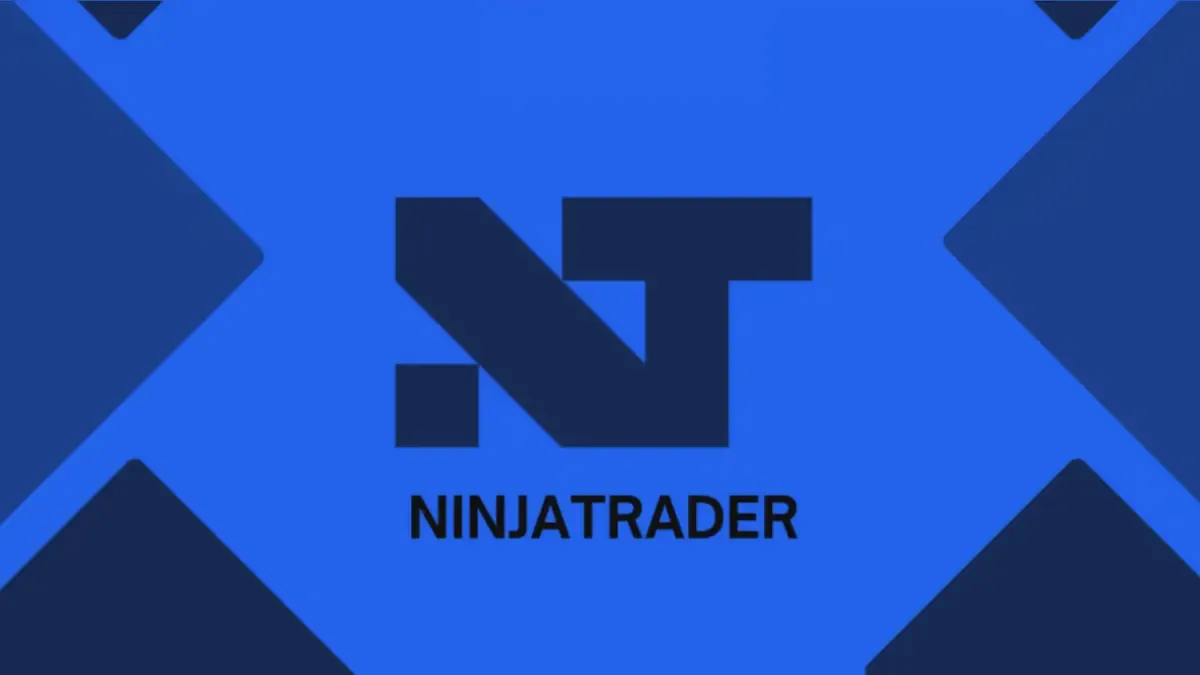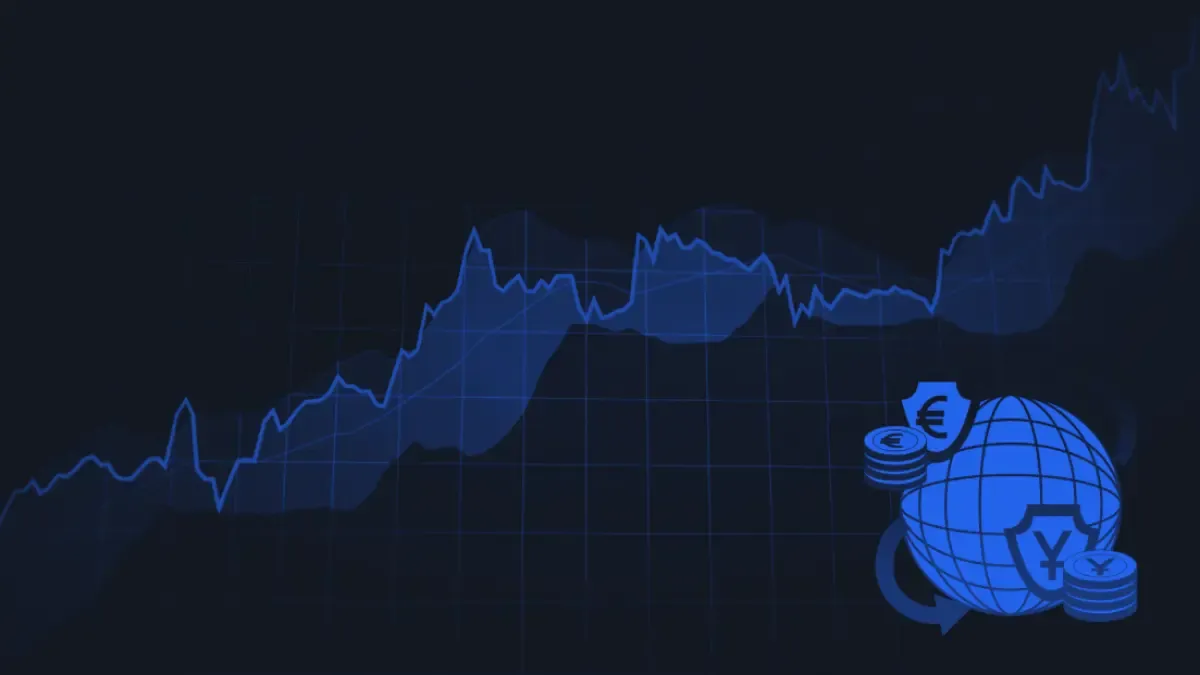Both futures and options are popular derivatives that allow you to speculate on or hedge market moves, but they have key differences in obligations, risk and trading mechanics.
In this in-depth guide, we’ll break down what futures and options are, compare their characteristics side-by-side, and help you understand which might be better suited for your trading style.
What Are Futures?
Futures are exchange-traded financial contracts obligating the buyer and seller to transact an asset at a predetermined price on a specific future date.
When you buy a futures contract, you agree to buy the underlying asset, or settle in cash, at expiration. If you sell a futures contract, you agree to sell the underlying asset at expiration.
Unlike options, both parties in a futures trade have an obligation to fulfill the contract.
The origin of Futures contracts: A Case Study
Futures trading is heavily linked to institutions, especially as it relates to commodities.
Think of a manufacturing company that relies on oil as a key input for its production process — say they produce plastic containers. Oil is a critical raw material because plastics are derived from petroleum.
-
Current Production Cost: The company’s operating budget assumes oil costs $50 per barrel.
-
Risk Exposure: If oil prices jump to $55, the cost of goods rises sharply. Even a $5 increase per barrel could shrink their profit margins or turn profits into losses, especially for a high-volume manufacturer.
To protect themselves, the company enters into an oil futures contract:
-
Futures Position: They agree to buy oil at $50/barrel three months from now, no matter what the market price is then.
-
Outcome:
-
If oil spikes to $60, they’re safe — they still pay $50, shielding their costs.
-
If oil drops to $45, they lose some upside, but stability is worth it because it allows for predictable pricing and steady production planning.
-
This is why futures are so crucial for institutions — they are the best hedging tool available to protect their businesses from market fluctuations.
For this company:
-
Futures help lock in costs.
-
This enables stable pricing, smoother supply chain operations, and consistent profit margins.
-
Without hedging, even minor fluctuations in raw material prices could disrupt the entire business.
So, Where Do Retail Traders Come In?
For the manufacturing company, futures are a shield — a way to lock in costs and create predictability. But there’s another side to this equation: price speculation.
The very same futures contracts that institutions use to hedge are also available to retail traders.
These traders don’t care about receiving barrels of oil or truckloads of wheat. Instead, they are focused on predicting price movements and profiting from volatility.
Why Futures Are So Attractive For Retail Traders
When a retail trader correctly anticipates whether the price of oil will rise or fall, they can buy or sell futures contracts to capture the difference, without ever taking delivery of the physical commodity.
This is why futures are so appealing: they offer leverage and access to large, highly liquid markets that move based on global supply and demand, geopolitical events and seasonal trends.
The rise in futures trading for profiteering has led to expansion of the instrument beyond commodities to S&P 500 and treasury bonds.
Traders are drawn to futures because they offer high leverage (only a margin deposit is required, often a few percent of the contract’s value) and nearly 24-hour trading access on global exchanges.
In fact, futures trading on U.S. markets typically runs almost around the clock from Sunday evening through Friday afternoon. Trades can be placed from 6:00 p.m. EST at the Globex open until 4:10 p.m. EST the next day, providing flexibility to react to news at almost any hour.
What Are Options?
Options are derivative contracts that give the buyer the right (but not the obligation) to buy or sell an underlying asset at a specified price (the strike price) on or before a specified expiration date.
The option seller (writer), on the other hand, does assume an obligation – to fulfill the contract if the buyer chooses to exercise the option.
There are two basic types of options.
-
Call options, which give the right to buy the underlying at the strike price; and,
-
Put options, which give the right to sell the underlying at the strike price.
Because the buyer isn’t obligated to exercise, they will do so only if it brings them benefit, like exercising a call if the market price is above the strike.
For this flexibility, the option buyer pays an upfront premium to the seller, which is the maximum the buyer can lose.If the market moves unfavorably, the buyer can simply let the option expire worthless and lose only the premium.
The seller, however, keeps the premium but faces potentially large risk if the market moves against them, unless they hedged or covered the position.
Options are available on many of the same underlying markets as futures but are more widely used by equity traders.
Each stock option contract typically represents 100 shares of stock, and options have standardized expiration dates.
A crucial aspect of options is that their pricing is non-linear and influenced by multiple factors like the underlying price, time to expiration, volatility and interest rates.
Unlike futures, options suffer from time decay – as expiration approaches — all else equal — the “time value” portion of an option’s premium shrinks, eroding the option’s value day by day.
This means an option trader has to be right not just about the direction of the move, but often the timing and magnitude as well.
In short, options offer more flexibility and strategic possibilities when it comes to spreads and combinations and can limit risk for the buyer to the premium paid, but come with added complexity in pricing and typically trade during specific market hours (for instance, stock options during the stock market’s regular session).
Key Differences Between Futures and Options
| Aspect | Futures | Options |
|---|---|---|
| Obligation vs. Right | A binding contract, where both parties must fulfill the deal at expiration, or settle in cash. | The buyer has the right but not the obligation to exercise, with loss of premium. Only the seller has an obligation if the buyer exercises. |
| Contract Size & Standardization | Large, standardized contracts. | Can be smaller and more flexible. |
| Risk & Leverage | Unlimited risk exposure and highly leveraged. | Limited risk for buyers (premium only) |
| Expiration & Settlement | Settles on fixed dates. | Expires worthless if not exercised. |
| Cost of Entry & Capital Requirements | Requires margin deposits (5-15% of contract value). | Full premium payment upfront |
Risk Considerations
A futures contract is a binding agreement — if the market moves dramatically against you, you’re on the hook for the full loss, which could exceed your initial margin or deposit.
By contrast, an option buyer can walk away after paying the premium – worst case, the option expires worthless and that premium is the only loss.
Futures have greater potential liability. Even a well-capitalized trader can be caught off-guard by a sudden market move in futures; a rapid 5% drop in the index futures could wipe out an account using high leverage.
Options can usually be structured to contain such risk, like by buying puts as insurance or simply risking a smaller premium for a potentially large payoff.
That said, it’s not a black-and-white answer that one is always riskier than the other — an option seller can also face huge risks (akin to “unlimited” loss if selling calls without coverage).
But from a prop firm or broker’s perspective, a newbie trading naked long options won’t lose more than their account on that trade, whereas a newbie trading futures might. This is why risk management protocols are stricter for futures.
Which Should You Trade?
Choosing between futures and options depends on your goals as a trader. Both products have their place, but the right choice often comes down to your trading objectives and the environment in which you plan to trade.
For independent retail traders, options can be appealing because the risk is capped at the premium you pay. They offer flexibility for hedging or building complex strategies like spreads or straddles. However, this flexibility comes at the cost of complexity: options require a deep understanding of volatility, Greeks, and time decay. They also tie you to stricter trading windows, since most equity options only trade during regular stock market hours.
Futures, on the other hand, offer direct, linear exposure to price moves in highly liquid global markets. Their appeal is simplicity: when the underlying moves, your P&L moves in a straight line.
Futures also trade nearly 24 hours a day, from the Sunday evening Globex open through Friday’s close, giving you more opportunities to react to global news and market flows.
For traders looking to join a prop firm and secure a funded account, futures often present the clearer path.
Bottom line? Futures vs. options is not about which is universally “better,” but which is better for you.
Futures offer simplicity, large market coverage, and are the vehicle of choice in most funded trading programs – great for fast execution and direct exposure.
Options offer versatility and predefined risk for the buyer, making them powerful for creative strategies or hedging, but they require greater understanding and are typically traded with your own capital or specialized setups.
Many new traders eventually learn both, but if you’re aiming to get funded in a prop firm for futures, focusing on futures trading skills will pay off.
And even if you love options, the discipline you learn from managing risk in futures (where there’s no safety net of limited loss except your own stop) can make you a stronger trader overall.
Looking to get funded to kickstart your futures trading journey? Start here
Disclaimer: Trading futures and options involves substantial risk of loss and is not suitable for all investors. You should carefully consider whether trading is appropriate for you in light of your financial condition, experience, and risk tolerance. Past performance is not indicative of future results.
Futures Disclaimer: Futures trading is highly leveraged and can result in losses greater than the funds deposited in your account. You may be required to deposit additional funds to maintain open positions, and a rapid market move can result in substantial losses.
Options Disclaimer: Options involve risk and are not suitable for all investors. Before trading options, you should carefully review the Characteristics and Risks of Standardized Options (ODD), available from the Options Clearing Corporation (OCC) or your broker. Options can expire worthless, and the entire premium paid may be lost.
Proprietary Trading Firm Disclaimer: Proprietary trading firms are not brokers and may operate under different regulatory frameworks. Funded accounts are internal evaluation arrangements, not customer brokerage accounts, and do not provide the same regulatory protections as registered broker-dealer or futures commission merchant accounts.
This material is provided for educational purposes only and should not be relied upon as trading, investment, tax, or legal advice. All participation in MyFundedFutures (MFFU) programs is conducted in a simulated environment only; no actual futures trading takes place. Performance in simulated accounts is not indicative of future results, and there is no guarantee of profits or success. Fewer than 1% of participants progress to a live-capital stage with an affiliated proprietary trading firm. Participation is at all times subject to the Simulated Trader Agreement and program rules.
Rate this article
Related Posts
Read our most popular posts
What Is MyFundedFutures Scale Account and Is It The Right Plan For You?
The MyFundedFutures Scale Account is a middle-tier evaluation plan that balances affordability with growth potential. The scale plan offers weekly payout opportunities with increasing withdrawal limits, no daily loss cap, and a clear path to live funding after just five consecutive payouts.
5 Best Prop Firms With NinjaTrader Integration
NinjaTrader's advanced charting and precision execution tools make it a top choice for active futures traders, but not every prop firm integrates it smoothly. We'll highlight five firms that support true NinjaTrader compatibility, how their setups compare, and which one gives you the most stable, consistent path from evaluation to funded account.
Spot Forex vs. Forex Futures: What's the Difference?
Spot forex and forex futures both let you trade currencies, but they operate through completely different market structures. Keep reading to find out how each market works and to compare their key differences in regulation, costs, and execution to help you decide which is better suited for your trading goals


